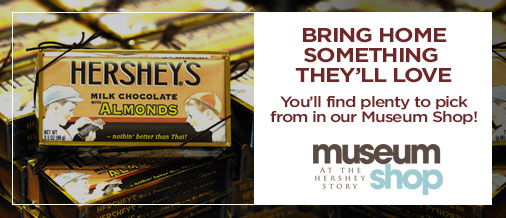by Rosemary Yee
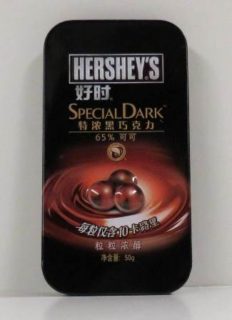
Over the past century, American tourists have visited Chinatowns across the United States for various reasons. While some explore the exotic cultures of East Asia, others quest for authentic Chinese cuisine. As they stroll down the streets of Chinatowns from San Francisco to New York City, tourists are likely greeted by bilingual Chinese and English signs appearing at the friendship gates, restaurants, groceries, and more. When The Hershey Company developed the greater China market in Hong Kong, Taiwan, and China at the turn of the 21st century, it, too, sought ways to capture the attention of Chinese customers. Besides packaging and promotion, another way to market a product is through its brand name. In the Chinese culture, a name plays a significant role in an individual’s or company’s future because a good name will bring happiness, prosperity, and success. What is Hershey’s in Chinese? How does The Hershey Company present its products to Chinese customers? The Hershey Story museum’s collections contain international product packages that give a glimpse of the advertising strategies utilized by The Hershey Company in the greater China market.
Before we proceed to examine the packaging, let’s consider some background information about the greater China market and the Chinese language. First of all, The Hershey Company established its presence in Hong Kong and Taiwan about a decade earlier than in China. Traditional Chinese characters are used in Hong Kong and Taiwan while simplified Chinese characters are used in China. Finally, an English word can be translated into Chinese phonetically and literally. Given a choice of about 5000 common Chinese characters, multiple versions of Chinese translations for an English word and phrase are possible. With these facts in mind, we are set to discover several products that are only found in the greater China market.
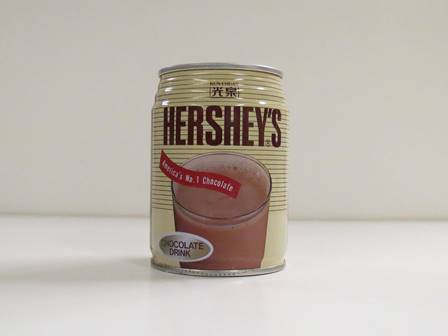
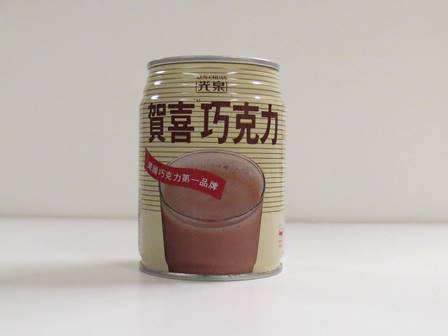
Under license by The Hershey Company, the Kun Chuan Dairy Company Limited produced Hershey’s Chocolate Drinks in Chiayi County, Taiwan. One side of the beige cylindrical can shows the brand name Hershey’s in bold brown letters of the English alphabet. When the can is turned around, 賀喜巧克力 replaces the brand name on the other side. The first two characters, 賀喜 (Hèxǐ), are the phonetic translations for Hershey’s in Taiwan. They mean “congratulations” and “joy.” The next three characters, 巧克力 (qiǎokèlì), are the phonetic translations for “chocolate.”
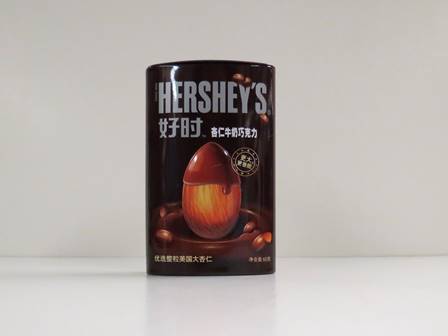
Now that we have learned Hershey’s Chinese name in Taiwan, let us figure out its Chinese name in China. The Hershey Foods International Trade Shanghai Company Limited entrusts Lotte Foods Company Limited (Shanghai) to manufacture Hershey’s Chocolate Covered Almonds in Shanghai, China. On the front of the brown oval tin, nine Chinese characters, 好时杏仁牛奶巧克力, appear below the brand name Hershey’s. The first two characters, 好时 (Hǎoshí), are the phonetic translations for Hershey’s in China. They mean “good times.” The next four characters, 杏仁 (xìngrén) and 牛奶 (niúnǎi), are the literal translations for “almond” and “milk,” respectively. The last three characters, 巧克力 (qiǎokèlì), are the same as the last three characters on the can of chocolate drink from Taiwan, which stand for “chocolate.”
Why are there two versions of Chinese names for Hershey’s? Since The Hershey Company entered the Taiwan market earlier and selected 賀喜 (Hèxǐ) as its Chinese translation, the Company probably played on the flexibility of the Chinese language to distinguish the newer China market with 好时 (Hǎoshí). Although word choices are different, both 賀喜 (Hèxǐ) in Taiwan and 好时 (Hǎoshí) in China convey a message of pleasure, jubilation, and luck in the Chinese language, which align with the vision of The Hershey Company.
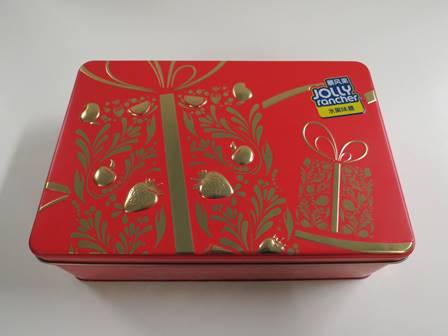
Interestingly, when The Hershey Company introduced Jolly Rancher fruit-flavored chews and gummies to China in 2014, its Chinese name went creative. Take a look at the brand name Jolly Rancher and the three white Chinese characters, 暴风果, on the top right of the red Jolly Rancher tin. Whereas Jolly Rancher literally means a cheerful person who owns or operates a ranch in English, 暴风果 (bàofēngguǒ) literally translates to “stormy fruit” in Chinese. How does a pastoral scene relate to a turbulent setting? One plausible explanation to this variation is the target consumer. As Philip Stanley, Vice President and General Manager of The Hershey Company, Greater China suggested, the Company advertised Jolly Rancher to “a storm of youth” in China. Instead of adhering to the original flavors of watermelon, green apple, grape, cherry, and blue raspberry, The Hershey Company catered to the taste of its young consumers by adding two new flavors to Jolly Rancher sold in China. Can you find a strawberry and mango on the red tin?
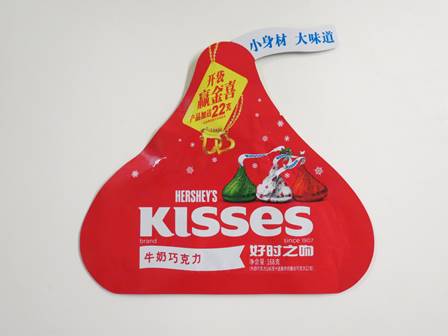
A discussion of Hershey’s products would not be complete without the iconic Hershey’s Kisses. Each piece of Hershey’s Kisses chocolate is wrapped in aluminum foil and topped with a white plume. Depending on the seasons and occasions, Hershey’s Kisses come in a variety of flavors with matching foil colors and plume messages. Printed below “since 1907” on this red conical bag is 好时之吻, the translations for Hershey’s Kisses in China. While the first two characters, 好时 (Hǎoshí), mean Hershey’s, the first three characters, 好时之 (Hǎoshí zhī ) also mean Hershey’s because 之 (zhī ) is a possessive modifier used in the Chinese language to indicate a relationship of the possessor, Hershey, and the possession, Kisses, which literally translates to 吻. Since each of the three Hershey’s Kisses on the right features a “KISSES” plume, it is safe to assume that the six Chinese characters, 小身材 大味道 (xiǎo shēncái dà wèidào), displayed on the white plume of the red bag mean Kisses as well. To the contrary, the first three characters, 小身材 (xiǎo shēncái), mean “petite size” and the next three characters, 大味道 (dà wèidào), mean “great taste.” Why is there a disparity? In the Confucius Chinese culture, kissing is considered an act of intimacy and it is something to be done in private. In order to adapt to local customs, it is likely that The Hershey Company mentions “Kisses” only once in Chinese and substitutes it with “petite size, great taste” instead.
Next time when you travel to any non-English speaking country, keep an eye on some American-made products. With the help of mobile translation apps or, better yet, a native speaker of the foreign language around you, you may get a kick out of the similarities and differences of the translated names and descriptions too.
Rosemary Yee is a summer 2016 curatorial intern at The Hershey Story museum. A Schreyer Honors College Scholar of The Pennsylvania State University (Harrisburg), Rosemary is pursuing an Integrated Bachelor of Arts and Master of Arts Degree in American Studies and a Graduate Certificate in Heritage and Museum Practice. Residing in Hershey, Pennsylvania with her husband and three children, she loves traveling to Hong Kong, her hometown, and around the world. For more information about Rosemary’s internship, please visit Camp Curatorial Curiosity. https://rkyee.wordpress.com

